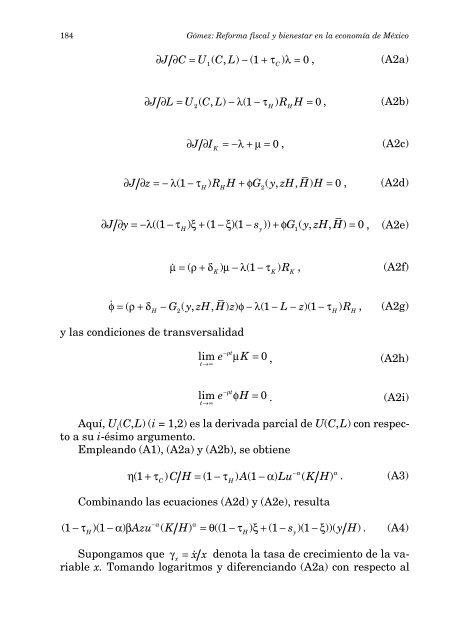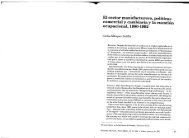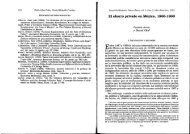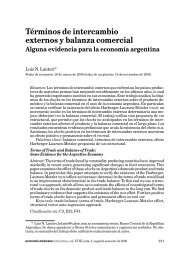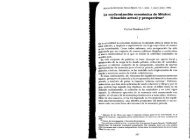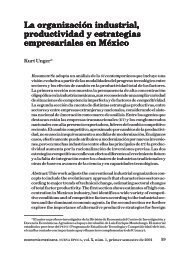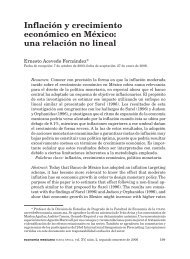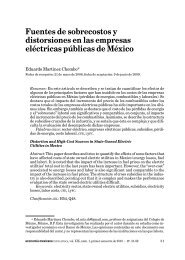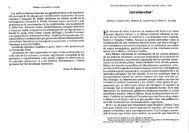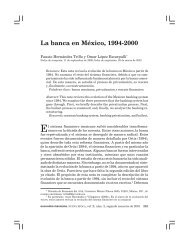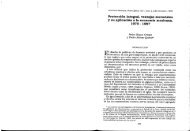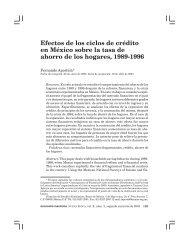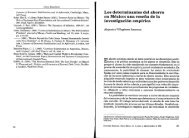Reforma fiscal y bienestar en la economía de México
Reforma fiscal y bienestar en la economía de México
Reforma fiscal y bienestar en la economía de México
You also want an ePaper? Increase the reach of your titles
YUMPU automatically turns print PDFs into web optimized ePapers that Google loves.
184 Gómez: <strong>Reforma</strong> <strong>fiscal</strong> y <strong>bi<strong>en</strong>estar</strong> <strong>en</strong> <strong>la</strong> <strong>economía</strong> <strong>de</strong> <strong>México</strong>∂J ∂C= U ( C,L)− (1 + τ ) λ 0 , (A2a)1 C=∂J∂L= U( C,L)− λ(1− τH) RHH 0 , (A2b)2=∂J ∂I= −λ + µ = 0 , (A2c)K∂J–∂z= − λ( 1 − τH ) RHH + φG2 ( y,zH,H)H = 0 , (A2d)∂J–∂y= −λ(( 1 − τH ) ξ + (1 − ξ)(1− sy))+ φG1 ( y,zH,H)= 0 , (A2e).µ = ( ρ + δ ) µ − λ(1− τ ) R , (A2f)KKK.–φ = ( ρ + δ − G2(y,zH,H)z)φ − λ(1− L − z)(1− τ ) R , (A2g)Hy <strong>la</strong>s condiciones <strong>de</strong> transversalidad−ρlim e tµ K = 0 , (A2h)t →∞HH−ρlim e tφH= 0 . (A2i)t →∞Aquí, U i (C,L) (i = 1,2) es <strong>la</strong> <strong>de</strong>rivada parcial <strong>de</strong> U(C,L) con respectoa su i-ésimo argum<strong>en</strong>to.Empleando (A1), (A2a) y (A2b), se obti<strong>en</strong>eη ( 1 + τH)−ααC) C H = (1 − τH)A(1− α)Lu ( K . (A3)Combinando <strong>la</strong>s ecuaciones (A2d) y (A2e), resulta−αα( 1 − τ )(1 − α)βAzu( K H)= θ((1− τ ) ξ + (1 − s )(1 − ξ))(y H). (A4)H.Supongamos que γx= x x d<strong>en</strong>ota <strong>la</strong> tasa <strong>de</strong> crecimi<strong>en</strong>to <strong>de</strong> <strong>la</strong> variablex. Tomando logaritmos y difer<strong>en</strong>ciando (A2a) con respecto alHy


